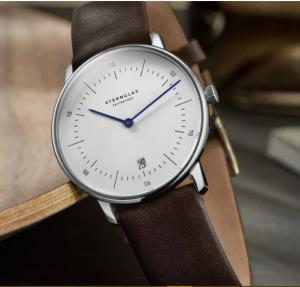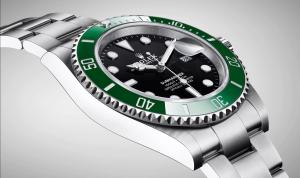Tudor GMT: Your Best Rolex GMT Master Alternative?

There’s no denying how GMT watches remain one of the favourites among watch enthusiasts. It’s an all-around complication that is useful not only for frequent travellers but also for everyone who is passionate about complicated watches. And with all the GMT watches that we find on the market, it can be quite hard to decide which truly is the best. Lucky for us, most Swiss luxury watch brands, known for the quality of their timepieces, have great GMT watches to offer. For one, an all-time favourite would definitely be the Rolex GMT Master series. However, not everyone has the budget for this timepiece. So, if you’re keeping your budget on track, you might want to take a look at this Tudor GMT watch that can compete with the GMT Master just as well.
Let’s take a closer look at the Tudor Heritage Black Bay GMT. Is this affordable alternative to the Rolex GMT Master really better than its more expensive counterpart?
Tudor GMT and Rolex GMT Master: A Short Background
The Tudor Black Bay GMT was launched simultaneously with the Pepsi bezel Rolex GMT Master II in 2018. The launch of these watches coincided with the rising trend of GMT watches at the 2018 Baselworld, as seen on TAG Heuer as well. Right off the bat, the difference between the two can be seen. However, similarities between the two also stand out in comparison. Perhaps, the most crucial detail we should focus on is the price difference. Tudor, being the younger sibling of Rolex, offers the Black Bay GMT between $3,000 and $5,000. That’s a lot less than the price of the Rolex GMT Master, which plays around five-digit costs. That alone speaks volumes about how the Tudor GMT can be a more affordable option for GMT watch enthusiasts, who want the same quality and pedigree as a Rolex GMT.
It should be kept in mind what Tudor is to Rolex. Hans Wilsdorf, the founder of Rolex, established Tudor as a more affordable alternative to Rolex while keeping its offerings top-notch, just as with Rolex watches. Given the performance provided by Tudor’s manufacture movement, plus the fact that its price goes far less than the GMT-Master II, there’s no question how the Tudor GMT became an instant favourite upon its release.

The GMT Master was launched in the mid-1950s when Rolex developed a watch for Pan American Airways (PanAm) pilots. Rolex, being a brand that stops at nothing with their offers, built upon this watch to eventually come up with the GMT Master II. The upgraded version of the GMT Master launched in 1983 with the reference 16760. One of the noticeable improvements from the GMT Master is the local jumping hours. This allowed the wearer to change the local time in either of two directions through the crown. So, if you land on a place with a new time zone, you just have to jump set the hour hand and you’re good to go. This also affected the date as seen on the dial. This became popular due to the fact that turning this independent hour hand wouldn’t affect the other hands.
Put side by side, the Tudor Black Bay GMT takes heavier cues from the Rolex GMT Master and GMT Master II rather than the Black Bay itself. That’s why it’s easier to understand the purpose and lineage of the Black Bay GMT with the GMT Master discussed. After all, while Tudor has its fair share of historical GMT timepieces, such as with the Tudor Heritage Chronograph, the concept of a second independent hour hand remains fairly new to the brand.
A Closer Look at the Tudor GMT
- Case: 41mm stainless steel case with a polished and satin finish
- Bezel: Bi-directional rotating steel bezel with 48 notches and 24-hour graduated anodised aluminium disc in matte burgundy and blue
- Crown: Screw-down winding, marked with the TUDOR rose in relief
- Depth Rating: Waterproof for up to 200 metres/660 feet.
- Dial: Black dial with a central hour, minute, and seconds hands, 24-hour display, and a date window
- Movement: Tudor Calibre MT5652, automatic movement, certified chronometer with a satin-brushed openwork rotor and sand-blasted detail; bi-directional rotor system; 70 hours of power reserve
1. Design
Despite the watch’s GMT features, it’s not so different from a Tudor Black Bay in general. Firstly, it still has the same stainless steel with mixed polished and brushed finishings. At 41mm in diameter and around 15mm in thickness, this watch isn’t small but it isn’t that big either. It’s fairly average and would suit most wrists. At 50mm lug to lug, there’s not much space for generic straps. But, after all, why settle for a generic strap when you have Tudor’s great selection of straps specifically made for their timepieces? The Tudor GMT has a case shape that doesn’t look chunky despite the way it’s designed. It’s probably because of the polished lug facet and flanks that smoothens the transition from case to bracelet.
2. Crown
The crown also holds a positive note for its size. It’s big enough to be set and has ridges that are perfect for the bare hands to manipulate. After all, we’re talking frequent flyers as the main market of this timepiece. There’s no need to amp it up to a need for glove-friendly crowns. What it specifically gives us is the insurance of 200 metres in depth rating. With that said, it’s quite an all-arounder watch. While there are Tudor dive watches that can give you a better depth rating, the water-resistance of the Tudor GMT makes it easier to transition to any sports activity. So, take a dive into the hotel pool or take it with you on an adventure off the coast. There’s no need to worry about where you take this watch with. In fact, there’s no need for a quick change to the Tudor Pelagos if you want to go diving. This GMT watch further proves that it’s all you need in a travel companion.
While looking ready for any and all adventures and occasions, the Black Bay GMT retains a tool watch sensibility due to its design.
3. Bezel
Here’s where the similarity begins for the Tudor GMT and the Rolex GMT Master. Firstly, a bi-directional 24-hour bezel isn’t news to any watch manufacturer. It’s simply a smart option especially for a timepiece with dual time. Essentially, they have the same function and even share the same colours, but the devil is in the detail with this one. The aluminium bezel has some stark differences if compared with the Rolex’s Cerachrom bezel.
Because Rolex employs ceramic as a bezel material, its colours stand out more as it absorbs light better. Meanwhile, the aluminum bezel somehow takes that brightness down a notch. So while the aluminum insert remains matte in finish, it’s still a far cry from the ceramic texture of the Cerachrom. But, generally, it meets a high standard that makes the bezel look like a quality distinction from other GMT watches in the market. The colours on the Black Bay GMT go between a navy blue that’s a little desaturated and a red that’s almost burgundy. These colours aren’t new to the Black Bay as it’s seen before in other models.
The lack of shine on the aluminium bezel also makes it look more like a tool watch. While fashionable in design, the Tudor GMT also proves to be a timepiece ready for any action.
4. Dial
Most Tudor Black Bay watches have black dials. You might find quite a few instances where a Black Bay has gold or blue dial but, in general, one of Black Bay’s iconic traits is its black dial. It gives the watch a good contrast between the dial and the indexes, that’s why one of the great features of this collection is legibility. Not far from that idea, the Tudor Black Bay GMT features a matte black dial with large and applied markers. The hands are also extremely legible and easy to read despite the extra GMT hand. Perhaps, what most people would like about the Tudor GMT is the text weight and distribution that’s evenly applied from the dial to the bezel. It’s not cluttered and only the most vital of information can be seen. It’s a matter of preference, but we’re liking the thinner and sleeker details of the Tudor GMT.
There is a nicely implemented and simple date window at 3 o’clock, which uses black text on a white background for maximum legibility. However, Tudor opted to skip the cyclops. With ample lume and strong general legibility, the Black Bay GMT dial is handsome, well balanced, and nicely detailed with white metal surrounds for the hands and markers.
Generally, the Tudor GMT could be the modern counterpart of the Rolex GMT Master II.
5. Bracelet/Strap

With the Tudor GMT, there are three options for bracelets and straps. By default, it comes with a steel rivet bracelet, which is perfect for the classic GMT look. However, you may also opt for a “Terra Di Siena” brown leather strap that is, by far, the most comfortable especially for everyday users. Tudor also offers a fabric strap for this watch with a red stripe running in the middle.
6. Movement

The Tudor Calibre MT5652 is quite thin for a movement with a GMT function. It’s full in size; however, with the GMT feature being integrated rather than modular, the Tudor GMT remains a relatively thin timepiece with such a complication. As a COSC-certified timepiece, aside from the astounding accuracy, it also offers a power reserve of up to 70 hours. Moreover, it also beats at 4Hz.
7. GMT Function
The Tudor GMT watch basically has two GMT functions that are both useful in the real world. Firstly, it has a 24-hour hand that is independent of the central hour, minute, and second hands. The 24-hour hand is red with lume at the end for better readability even in the dark. It’s easier to set that one, as it points directly to the 24-hour indexes of the bezel. You can set this time by turning the bezel in hour intervals.
On the other hand, just as with the Rolex GMT Master series, it also has the jumping hour function. That makes time adjustments easier as it allows time to be set in hour intervals towards either direction.
Both these functions prove greatly useful for any user of the watch. Frequent fliers wouldn’t have to worry about out of sync time.
Is the Tudor GMT Better than the Rolex GMT Master II?
There’s no easy answer for this, but for someone looking for a more affordable alternative to the GMT-Master II, it’s not hard to fall in love with the Tudor Black Bay GMT watch. That’s a lot of savings if you choose to purchase this timepiece instead of its Rolex counterpart. Not to mention, if you’re a fan of a more modern design, then the Tudor GMT may be the one for you. The sleek typography of this watch plus the COSC-certification means you’re getting a lot more than what you’ve paid for in a watch.
But at the end of the day, it’s a matter of preference. Do you prefer the classic detailing of the Rolex GMT Master? Or you want a more contemporary take on the classic GMT watch? You would also want to consider your budget. It’s not so bad of an investment given that Tudor doesn’t mass produce their watches despite the relatively affordable price point for a chronometer watch. The Tudor GMT remains one of the best sellers of the brand today, and we can totally understand why.
Want more Tudor vs Rolex comparisons? Check out our comparative review of the Tudor Pelagos and the Rolex Submariner!
Photo credits: All photos courtesy of Tudor Watches


